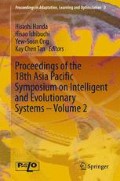Abstract
Nowadays a game BOT becomes a major threat in the online game industry. Game BOTs make the users get more experience points and become a higher-level easily. Therefore, normal users feel unfair and finally leave the game. Accordingly, there have been many efforts to distinguish game BOTs from normal users. Among them, action sequence analysis is effective way compared to other BOT detection methods. However, previous works could not use large datasets because of the limitation of computing power and accessibility to handle large dataset so far. In this paper, we analyzed the full action sequence of users on the big data analysis platform. We evaluated the BOT detection accuracy with real game service data, Blade and Soul. As a result, we showed that full sequence analysis gives the power to detect BOTs precisely. The values for precision and recall were 100%.
Access this chapter
Tax calculation will be finalised at checkout
Purchases are for personal use only
Preview
Unable to display preview. Download preview PDF.
References
Kang, A., Woo, J., Park, J., Kim, H.: Online game bot detection based on party-play log analysis. Computers and Mathematics with Applications 65, 1384–1395 (2013)
Woo, J., Kim, H.: Survey and research direction on online game security. In: Workshop at ACM SIGGRAPH ASIA 2012, pp. 19–25 (2012)
Thawonmas, R., Kashifuji, Y., Chen, K.: Detection of MMORPG bots based on behavior analysis. In: ACE 2008 Proceedings of the 2008 International Conf. on Advances in Computer Entertainment Technology, pp. 91–94 (2008)
Chen, K., Pao, H.K., Chang, H.: Game bot identification based on manifold learning. In: NetGames 2008 Proceedings of the 7th ACM SIGCOMM Workshop on Network and System Support for Games, pp. 21–26 (2008)
Ahmad, M.A., Keegan, B., Srivastava, J., Williams, D., Contractor, N.: Mining for gold farmers: automatic detection of deviant players in MMOGs. In: International Conference on Computational Science and Engineering, CSE 2009, vol. 4, pp. 340–345 (2009)
Chen, K., Jiang, J., Huang, P., Chu, H., Lei, C., Chen, W.: Identifying MMORPG Bots: a traffic analysis approach. EURASIP Journal on Advances in Signal Processing (2009)
Chu, Z., Gianvecchio, S., Koehl, A., Wang, H., Jajodia, S.: Blog or block: detecting blog bots through behavioral biometrics. Computer Networks 57(3), 634–646 (2013)
Mitterhofer, S., Kruegel, C., Kirda, E., Platzer, C.: Server-side bot detection in massively multiplayer online games. IEEE Security & Privacy 7(3), 29–36 (2009)
Kang, A., Kim, H., Woo, J.: Chatting pattern based game BOT detection: do they talk like us? 6(11), 2866–2879 (2012)
Woo, J., Choi, H., Kim, H.: An automatic and proactive identity theft detection model in MMORPGs. Appl. Math. Inform. Sci. 6(1S), 291S-302S (2012)
Platzer, C.: Sequence-based bot detection in massive multiplayer online games. In: Communications and Signal Processing (ICICS) 2011 8th International Conference on. Information. IEEE (2011)
Shatkay, H., Zdonik, S.B.: Approximate queries and representations for large data sequences, data engineering. In: Proceedings of the Twelfth International Conf. on, pp. 536–545 (1996)
Wang, W., Zaiane, O.R.: Clustering web Sessions by sequence alignment. In: 13th Int. Workshop on Database and Expert Syst. Applications, France (2002)
Morzy, T., Wojciechowski, M., Zakrzewicz, M.: Scalable hierarchical clustering method for sequences of categorical values. Proc. 5th Pacific-Asia Conf. KDD, Hong Kong (2001)
Kim, H., Hong, S., Kim, J.: Detection of auto programs for mMORPGs. In: Zhang, S., Jarvis, R.A. (eds.) AI 2005. LNCS (LNAI), vol. 3809, pp. 1281–1284. Springer, Heidelberg (2005)
Domingos, P., Pazzani, M.: On the optimality of the simple Bayesian classifier under zero-one loss. Mach. Learn. 29(2-3), 103–130 (1997)
Famoni, M., Senastiani, P.: Robust Bayes classifiers. Artificial Intelligence 125, 209–226 (2001)
Agrawal, R., Srikant, R.: Fast algorithms for mining association rules in large databases. In: Proceedings of the 20th International Conference on Very Large Data Bases, Santiago, vol. 1215, pp. 487–499 (1994)
Sahami, M., Dumais, S., Heckerman, D., Horvitz, E.: A Bayesian approach to filtering junk e-Mail. In: Proceedings of the AAAI Workshop, pp. 55–62 (1998)
Chen, P.L., Lee, C.C., Li, C.Y., Chang, C.M., Lee, H.C., Lee, N.Y., Wu, C.J., Shih, H.I., Tang, H.J., Ko, W.C.: A simple scoring algorithm predicting vascular infections in adults with nontyphoid Salmonella bacteremia. Clin. Infct. Dis. 55(2), 194–200 (2012)
Androutsopoulos, I., Koutsias, J., Chandrinos, K.V., Paliouras, G., Spyropoulos, C.D.: An evaluation of naive bayesian anti-spam filtering. In: 11th European Conference on Machine Learning, Barcelona, pp. 9–17 (2000)
Thurau, C., Bauckhage, C., Sagerer, G.: Combining Self Organizing Maps and Multilayer Perceptrons to Learn Bot-Behavior for a Commercial Game. In: Proceedings of GAME-ON 2003, pp. 119–123 (2003)
Lee, J., Lim, J., Cho, W., Kim, H.: I know what the BOTs did yesterday: Full action sequence analysis using Naïve Bayesian algorithm. Network and Systems Support for Games, pp.1–2 (2013)
Author information
Authors and Affiliations
Corresponding author
Editor information
Editors and Affiliations
Rights and permissions
Copyright information
© 2015 Springer International Publishing Switzerland
About this paper
Cite this paper
Lee, J., Lim, J., Cho, W., Kim, H.K. (2015). In-Game Action Sequence Analysis for Game BOT Detection on the Big Data Analysis Platform. In: Handa, H., Ishibuchi, H., Ong, YS., Tan, KC. (eds) Proceedings of the 18th Asia Pacific Symposium on Intelligent and Evolutionary Systems - Volume 2. Proceedings in Adaptation, Learning and Optimization, vol 2. Springer, Cham. https://doi.org/10.1007/978-3-319-13356-0_32
Download citation
DOI: https://doi.org/10.1007/978-3-319-13356-0_32
Publisher Name: Springer, Cham
Print ISBN: 978-3-319-13355-3
Online ISBN: 978-3-319-13356-0
eBook Packages: EngineeringEngineering (R0)

